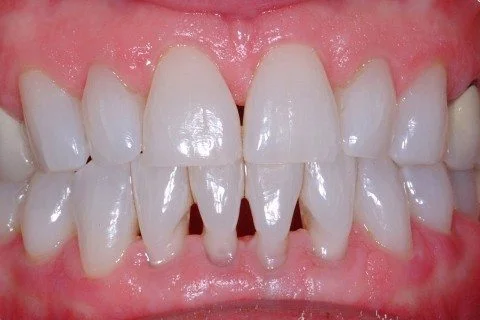Discover the potential pitfalls of opting for cheap composite bonding and why it's crucial to make an informed decision for your dental health.
Understanding Composite Bonding
Composite bonding is a dental procedure that involves applying a tooth-colored resin material to repair or improve the appearance of teeth. It is a popular choice among individuals looking for a cost-effective solution to enhance their smiles. Understanding the basics of composite bonding can help you make an informed decision when it comes to choosing the right option for your dental needs.
During the composite bonding process, the dentist prepares the tooth surface by roughening it and applying a conditioning liquid. Then, the composite resin material is carefully applied, molded, and shaped to achieve the desired result. Once the resin is in place, it is hardened using a specialized light, and final adjustments are made to ensure a comfortable and natural-looking result.
Composite bonding is known for its ability to address various dental concerns, including chipped, cracked, or discolored teeth. It can also be used to close gaps between teeth and reshape uneven or misaligned teeth. The procedure is relatively quick, painless, and can often be completed in a single dental visit, making it an attractive option for many patients.
The Appeal of Cheap Composite Bonding
One of the main reasons individuals are drawn to cheap composite bonding is its affordability. Compared to other dental procedures such as porcelain veneers or crowns, composite bonding is generally more budget-friendly. This makes it accessible to a wider range of patients who may have financial constraints or are looking for a more economical solution.
Cheap composite bonding also offers the advantage of being a minimally invasive procedure. Unlike veneers or crowns, which require the removal of a significant portion of the natural tooth structure, composite bonding preserves most of the tooth's original structure. This means that less enamel needs to be removed, making the process less invasive and more conservative.
Additionally, cheap composite bonding can provide immediate results. Once the procedure is completed, you can enjoy a transformed smile right away. This instant gratification is particularly appealing to individuals who are seeking a quick and affordable solution to improve the appearance of their teeth.
Compromised Quality and Durability
While cheap composite bonding may seem like an attractive option at first glance, it is important to consider the potential drawbacks. One of the main concerns with cheap composite bonding is the compromised quality and durability of the materials used.
Low-cost composite materials may not offer the same level of strength and longevity as higher-quality alternatives. This means that the bonded composite may be more prone to chipping, staining, or wearing down over time. It is essential to understand that opting for cheap composite bonding may result in the need for frequent repairs or replacements, ultimately costing you more in the long run.
Furthermore, cheap composite materials may not have the same aesthetic properties as higher-quality options. They may be more prone to discoloration or have a less natural appearance, affecting the overall esthetic result of the bonding. It is crucial to prioritize the quality of materials used in composite bonding to ensure a durable and aesthetically pleasing outcome.
Health Risks Associated with Cheap Composite Bonding
Another important aspect to consider when it comes to cheap composite bonding is the potential health risks involved. Low-cost materials may contain harmful substances or toxins that can pose a threat to your oral health.
For example, some cheap composite materials may contain higher levels of BPA (Bisphenol A), a chemical that has been linked to various health issues. BPA can potentially leach out of the composite and be absorbed by the body. This can have adverse effects on hormone regulation and overall health. It is crucial to choose composite bonding materials that are free from harmful substances to ensure the safety of your dental health.
Additionally, cheap composite bonding may not provide a proper seal, increasing the risk of bacterial infiltration and tooth decay. It is essential to have the bonding procedure performed by a skilled and experienced dentist using high-quality materials to minimize the risk of oral health complications.
Choosing Quality over Cost
When it comes to your dental health, it is always advisable to prioritize quality over cost. While cheap composite bonding may seem like an appealing option initially, it is essential to consider the potential pitfalls associated with it.
Investing in higher-quality composite bonding materials may involve a higher upfront cost, but it can offer significant long-term benefits. Quality materials are more durable, resistant to staining, and provide a more natural-looking result. They also minimize the risk of oral health complications and the need for frequent repairs or replacements.
To ensure the best outcome, it is crucial to consult with a reputable and experienced dentist who can guide you in making an informed decision. They can assess your dental needs, discuss the available options, and recommend the most suitable composite bonding materials that meet both your aesthetic goals and long-term oral health requirements.
In conclusion, understanding the potential problems associated with cheap composite bonding is essential. By considering the compromised quality and durability, as well as the potential health risks, you can make an informed decision for your dental health. Opting for quality over cost can provide you with a long-lasting, aesthetically pleasing result that enhances both your smile and overall well-being.


